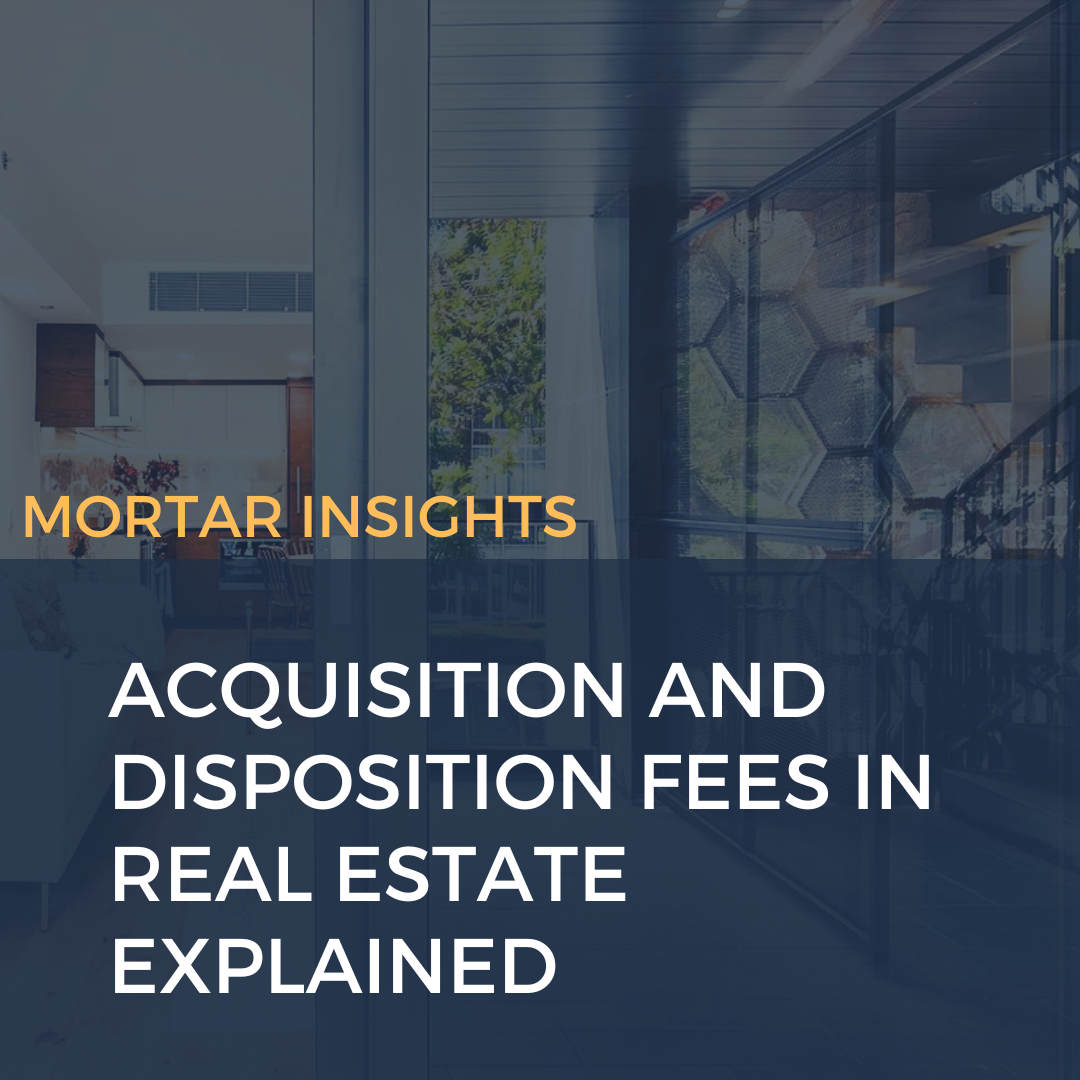
Acquisition & Disposition Fees Explained in Real Estate
In real estate investments and private equity deals, sponsors (also known as general partners or GPs) are responsible for sourcing, executing, managing, and ultimately exiting investment opportunities. For this work, sponsors can earn various fees, and it’s important for investors to understand them when evaluating a new deal or assessing a sponsor’s alignment.
Two of the most common are the acquisition fee and the disposition fee. These fees are not just compensation, they’re an integral part of the sponsor’s role, value, and alignment with investor returns. When structured fairly and transparently, they reward execution without eroding the investor’s upside, while also providing revenue to manage daily operations over the life of the investment.
What Is an Acquisition Fee?
A sponsor acquisition fee is a one-time fee paid at closing to compensate the sponsor for the front-end work required to source, underwrite, and secure a property.
Typical Range:
1%–2% of total purchase price or equity raised
Covers:
- Deal sourcing and relationship building
- Market research and financial underwriting
- Legal, structural, and lender coordination
- Due diligence and third-party vendor management
- Investor presentation preparation and offering documents
Why It Matters:
Before a project generates any cash flow, the sponsor may spend months of effort and capital securing the deal. The acquisition fee compensates for that up-front risk.
What Is a Disposition Fee?
A sponsor disposition fee (or exit fee) is paid at the time of sale and reflects the sponsor’s effort to prepare and execute an exit from the investment.
Typical Range:
2%–3% of gross sale price or net proceeds
Covers:
- Exit strategy development and market timing
- Oversight of broker selection and negotiation
- Legal and closing process coordination
- Property preparation, repairs, and inspections
- Investor communication and distribution management
Why It Matters:
The exit is often just as complex—and impactful—as the acquisition. A well-managed disposition can significantly improve investor returns. Our fee reflects the value we deliver in maximizing sale proceeds, closing efficiency, and investor outcomes.
How Mortar Group Structures Sponsor Fees
At Mortar Group, we do things a little different. To better prioritize alignment – Mortar does not take an acquisition fee. For the sake of transparency and investor-first economics, at closing or acquisition, the actual hard part of the investment begins – so its time to buckle down and get to work. Here’s our approach:
- Acquisition Fees: None.
- Disposition Fees: We charge 3% of the final sale price, payable only upon a successful exit.
- Transparency: Fees are clearly disclosed and benchmarked against industry norms.
Combined Sponsor Fee Example
| Deal Detail | Amount |
| Purchase Price | $10,000,000 |
| Equity Raised | $3,500,000 |
| Acquisition Fee | $0 (Mortar Group standard) |
| Sale Price After 5 Years | $13,000,000 |
| Disposition Fee (3% of sale price) | $390,000 |
These fees are paid from project proceeds and should always fully disclosed in offering documents.
Investor Considerations
When reviewing sponsor fee structures, ask:
- Are fees clearly disclosed in the offering documents?
- Are they consistent with market norms?
- Are they justified by the sponsor’s responsibilities and performance?
- Are they separate from promote or performance-based upside?
Ultimately, there are a variety of ways to structure fees and promotes. We just touched on two, but there are also different fee structures, management fees, waterfalls and hurdles. There is no right or wrong way, as long as investors understand them and are comfortable with them. Sponsor fees are a normal part of real estate investing.
When structured responsibly, acquisition and disposition fees reflect a sponsor’s operational value—not just a cost to investors.

